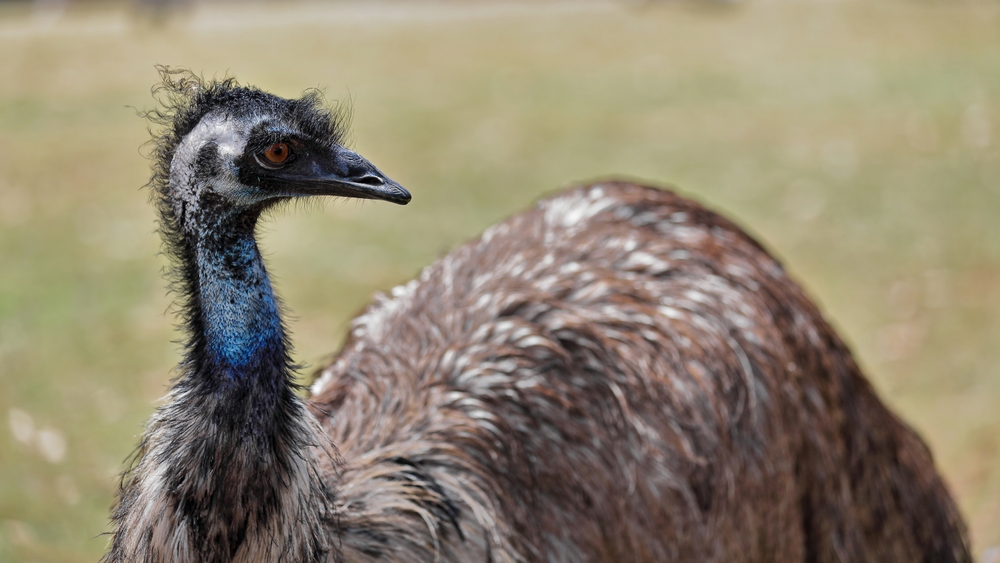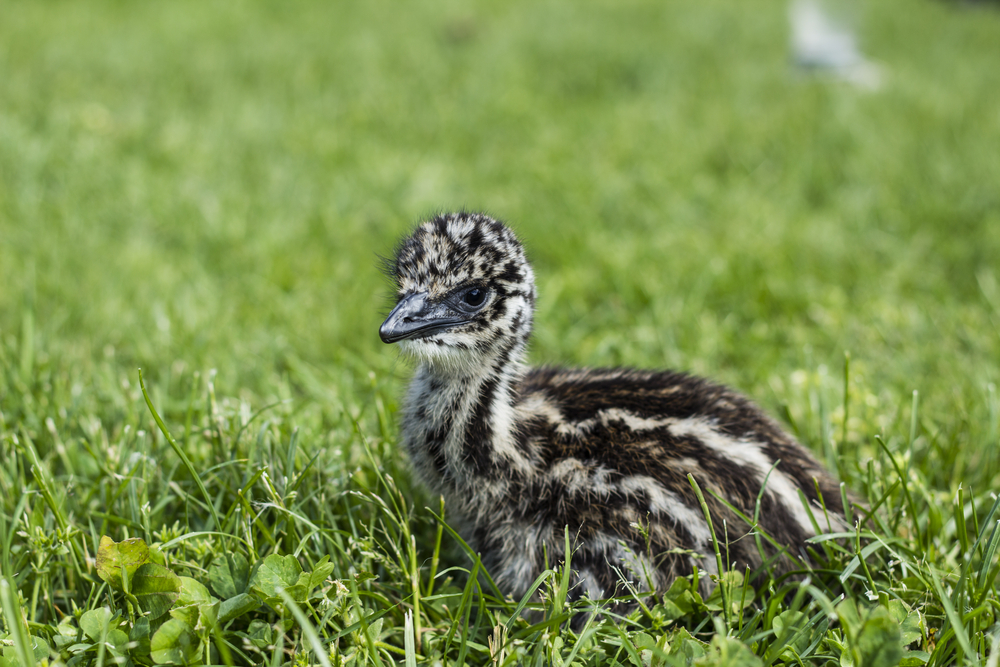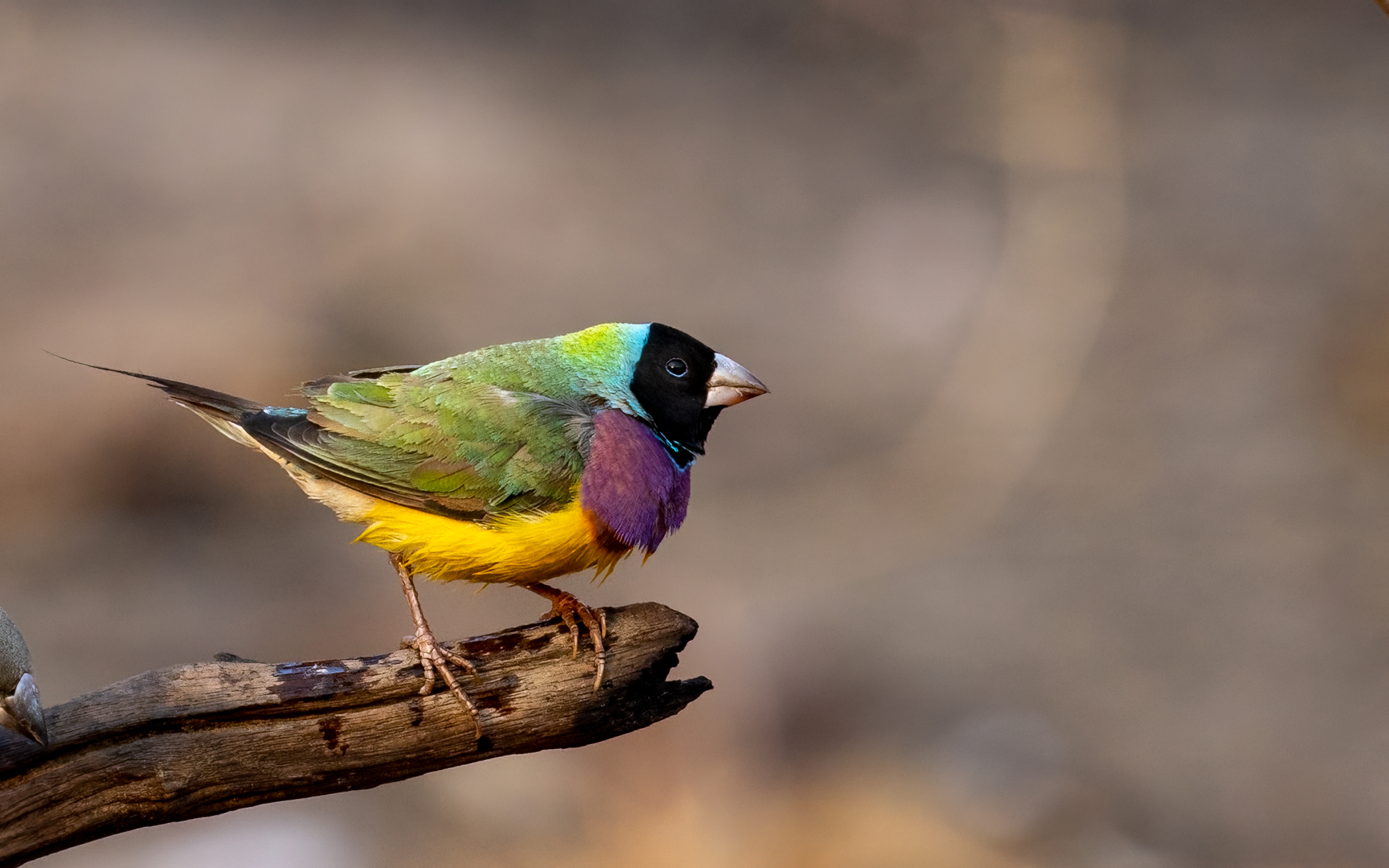| Common name | Emu |
| Scientific name | Dromaius novaehollandiae |
| Type | Bird |
| Diet | Fruits, seeds, plant shoots, insects and other small animals, and animal droppings |
| Average lifespan | Between 10 and 20 years in the wild, sometimes up to 35 years in captivity |
| Size | Between 1.6 and 1.9 metres tall |
Thundering through the outback at speeds of up to 50km per hour, the emu might be Australia’s largest flightless bird, but it certainly isn’t its slowest.
Endemic to Australia, the emu is a well-known fixture within most parts of the country and was one of the first species recorded by early European explorers, who gave it the name ‘Emu,’ derived from an Arabic word meaning ‘large bird’.
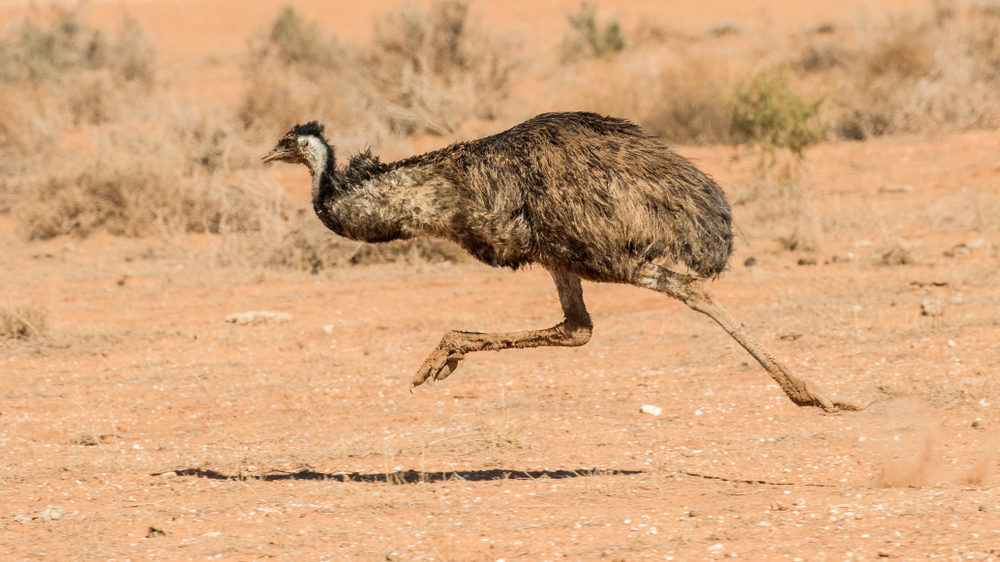
Hunted for food, celebrated in culture, and represented in traditional artworks and dance by Indigenous Australians for thousands of years, there is no specific, standard Indigenous word for emu, since there is no single, indigenous language. This native bird is also the subject of astrological mythology, most notably the emu constellation, and other creation stories for Aboriginal peoples.
Reaching between 1.6 and 1.9 metres tall, the emu has small wings (just 20cm long) but long powerful legs with three forward-facing toes and no hind toe. The adult emu is covered in soft grey-brown feathers, except for its head and neck which are blueish black. Emu chicks are grey with stripes of black, brown, and cream, helping them to easily blend into the grassy bushland.
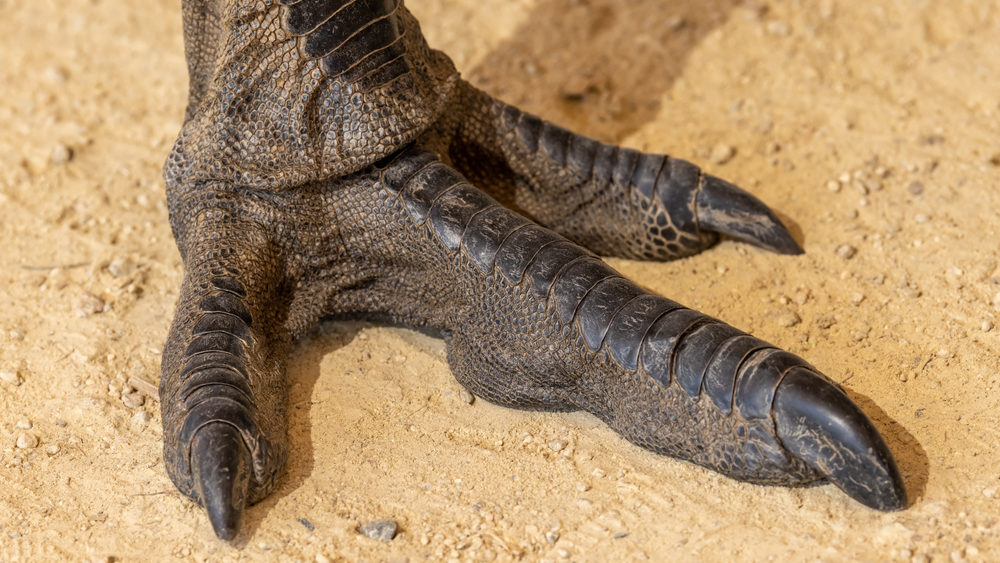
It’s no huge surprise that another of Australia’s famous big birds, the Cassowary, is the closest living relative to the emu. The emu is lighter than its relation, but taller and less heavy-set. What may be less well-known is that three dwarf subspecies of the mainland emu once roamed Tasmania and King and Kangaroo Islands but were hunted to extinction once Europeans arrived within Australia.
Found throughout most of Australia, roaming from coastal regions all the way to the high snowy mountains, the emu makes its home in sclerophyll forests and savannah woodlands. Nomadic, the emu will travel up to 25 kilometres per day in search of food or water and eat the parts of plants with the densest nutritional content such as seeds, fruit, flowers, and young shoots. They also eat insects and small invertebrates and interestingly also digest large pebbles and charcoal, which helps their gizzards grind up food.
Paternal care is high on the agenda for the emu, with the mother helping to build a nest, then laying five to 15 dark green eggs, and then dad steps in. The female emu leaves her eggs to breed again, leaving the male to forgo food and water for around 55 days while he incubates the eggs, losing up to eight kilos in the process. The father stays with the newly born chicks for a further six months, teaching them to find food and keeping them safe until they reach maturity at 20 months.
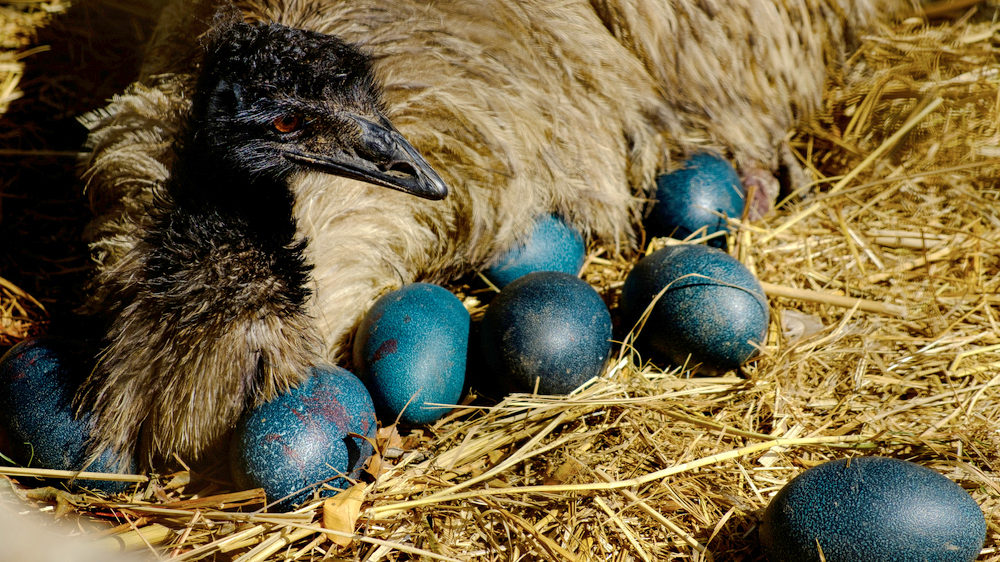
Often silent, the emu does make deep booming, guttural sounds during the breeding season and chicks can be heard softly whistling to their parent as they forage for food. With few natural predators except for the dingo and wedge tailed eagle, the emu is an important seed disperser like its Cassowary cousin and plays an important role in bush biodiversity.
Once culled in large numbers by farmers after being identified as a threat to wheat crops, the emu is now protected under federal law and has been re-introduced to Tasmania, where they had previously disappeared.

